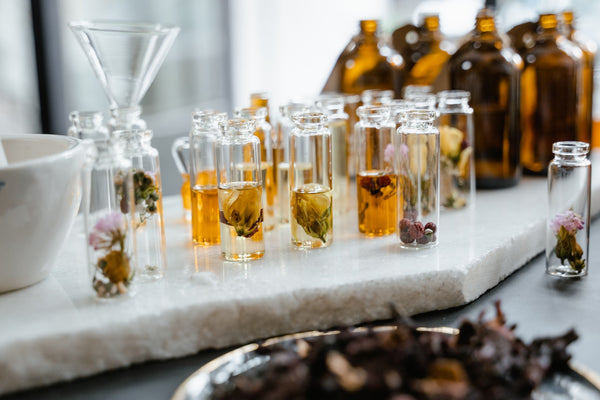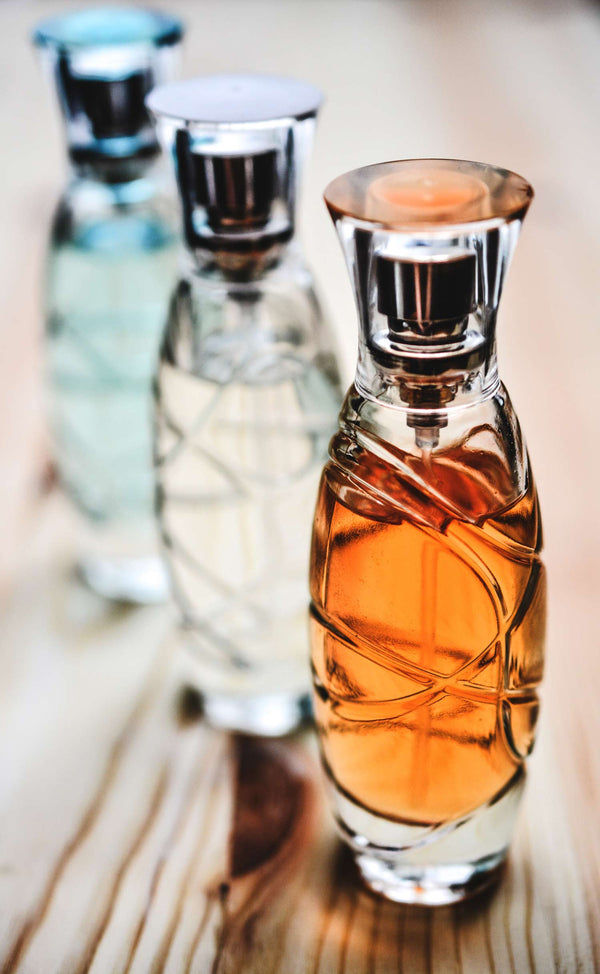
4 Ways to Extend the Life of Your DIY Fragrance
When you’re excited about the new fragrance you’ve just created, you can’t wait to show it off.
You spritz it on proudly and go out to take on the world. Around lunchtime, you have the disappointing realization that your homemade fragrance has vanished with hardly a trace.
DIY perfumes, especially clean fragrances, sometimes lack the staying power of their commercial cousins.
But don’t despair – there are steps you can take to create a longer-lasting DIY fragrance.
Why does my homemade perfume fade so quickly?
There are a few reasons your homemade scent might not last as long as one bought off the shelf.
- Commercial fragrances often contain chemical stabilizers. It’s not quite fair to compare the staying power of a DIY fragrance to a commercial cologne. Commercial perfumiers often use preservatives and stabilizers to keep their fragrances smelling the same both in the bottle and on the skin.
One of the beautiful things about your DIY fragrance is that it’s made without these chemical additives. The tradeoff to this cleaner formula is that your homemade perfume may fade faster.
- Natural ingredients break down faster than synthetics. Natural botanical ingredients like essential oils are often more volatile than their synthetic counterparts. That simply means the molecules break down faster.
That’s why homemade fragrances have a depth of character commercial fragrances lack. As the perfume evaporates, the top notes break down first – within the first hour.
The fragrance is then led by the heart notes, which last up to four hours before gracefully giving way to the base notes, which can last up to six hours. This creates a beautiful shifting mosaic of fragrance that evolves throughout the day.
With that in mind, design your fragrance from the bottom up, starting with the base notes that will be with you most of the day. You can also add fixatives to your formula to extend its fragrance life (more on that below).
- You’re not using high-quality ingredients. Not all essential oils, fragrance notes, and fragrance carriers are created the same. Low-quality ingredients may be cheaper, but they also tend to break down and fade away faster. That leads to using more product to keep up the fragrance, which can quickly zero out any money you thought you were saving in the first place.
How to design a long-lasting DIY fragrance
Once you know why your homemade perfume or cologne is fading so fast, you can adjust your formula to help it last.
1) Choose the right scent concentration
The higher the scent concentration in your fragrance, the longer it will typically last. An eau de parfum, at up to 20% fragrance, will nearly always outlast an eau de cologne, with just 5% fragrance.
Keep in mind that increasing your concentration also intensifies the smell when the fragrance is just applied. Before you add more scent to your formula, be sure you’re OK with creating a stronger perfume.
Perfume & Cologne Dilutions
- Strongest Parfum: 16-20% fragrance/essential oil : 80-84% carrier agent
- Eau de Parfum: 11-15% fragrance/essential oil : 89-85% carrier agent
- Eau de Toilette: 10% fragrance/essential oil : 90% carrier agent
- Eau de Cologne: 6-9% fragrance/essential oil : 91-94% carrier agent
- Body Spray: 5% fragrance/essential oil : 95% carrier agent
Other Product Dilutions
- Bath Salts: 1/16 oz per lb
- Body Oil: Normal: 1-1 or Strong: 2-1
- Candlemaking: 1/4-1/2 oz per lb in paraffins
- Soy Candlemaking: Works well in some soy candles, you will need to test.
- CP Soapmaking: 1/4-1/2 oz per lb in mixtures
- HP/MP Soapmaking: 1/4-1/3 oz per lb in mixtures
- Incense Making: Dilute 3-1 or 4-1 (base - FO/EO) depending on preference
- Lampe Bergers: 7 ml per lb of ethanol or Lampe Berger fuel
- Lotions/Shower Gel/Massage Oil: 1/8-1/4 oz per lb
- Oil Burning: 2-1 or 3-1 (base - FO/EO) depending on preference
- Potpourri Sachets: 2-1 or 3-1 (base - FO/EO) depending on preference
- Room/Linen Spray: 5-10% fragrance/essential oil : 90-95% carrier agent
2) Build a sound fragrance base
All of your fragrance notes are classified as top, heart, or base notes. Since top notes fade fastest, a formula heavy on these light scents will fade quickly. A formula that focuses on the base notes has more staying power.
3) Add fixative ingredients to make perfume last longer
Fixatives are ingredients that hold a scent together. Some fixatives are low-volatility compounds – their scent lingers a long time, but they don’t affect the elements they’re mixed with.
Other fixatives, through their heavy molecular structure, actually slow down the evaporation rate of the entire formula.
Low-volatility fixatives include base notes like vetiver and oakmoss. You can smell them soon after the fragrance is applied, and their scent lingers long after the more volatile notes have faded away.
Fixatives that make the entire fragrance last longer include resinous base notes like frankincense and myrrh.
If you’re looking for an odorless alternative to extend your fragrance’s life, you could try glycerin or Vitamin E isomer blends. These natural additives help to slow down the evaporation of some fragrances, but not all of them.
4) Try blending an oil-based fragrance
When building your homemade fragrance, pay attention to your carrier agent. You have a choice to use perfumer’s alcohol or fractionated coconut oil.
Perfumer’s alcohol is popular because it fully dilutes the notes and preserves the fragrance. Also, if you want to spray your fragrance, you have to mix it with alcohol.
Oil will simply gum up your atomizer. The alcohol carries the fragrance as it evaporates, so the scent carries on the air around you.
Oil-based fragrances are dabbed or rolled on the skin, where they cling and soak into your pores. This keeps the scent closer to you, but also helps it last longer.
Keep experimenting
If you’re frustrated with the staying power of your homemade fragrance, don’t give up! Try re-evaluating your formula to strengthen the concentration or base notes. Or try applying it as an oil. And always make sure you are using ingredients of the highest quality and storing your fragrance properly.
For more tips on crafting DIY fragrances, download our free Beginner’s Guide to Perfumery. It includes useful information on building your first fragrance, plus tested-and-loved recipes to try.

